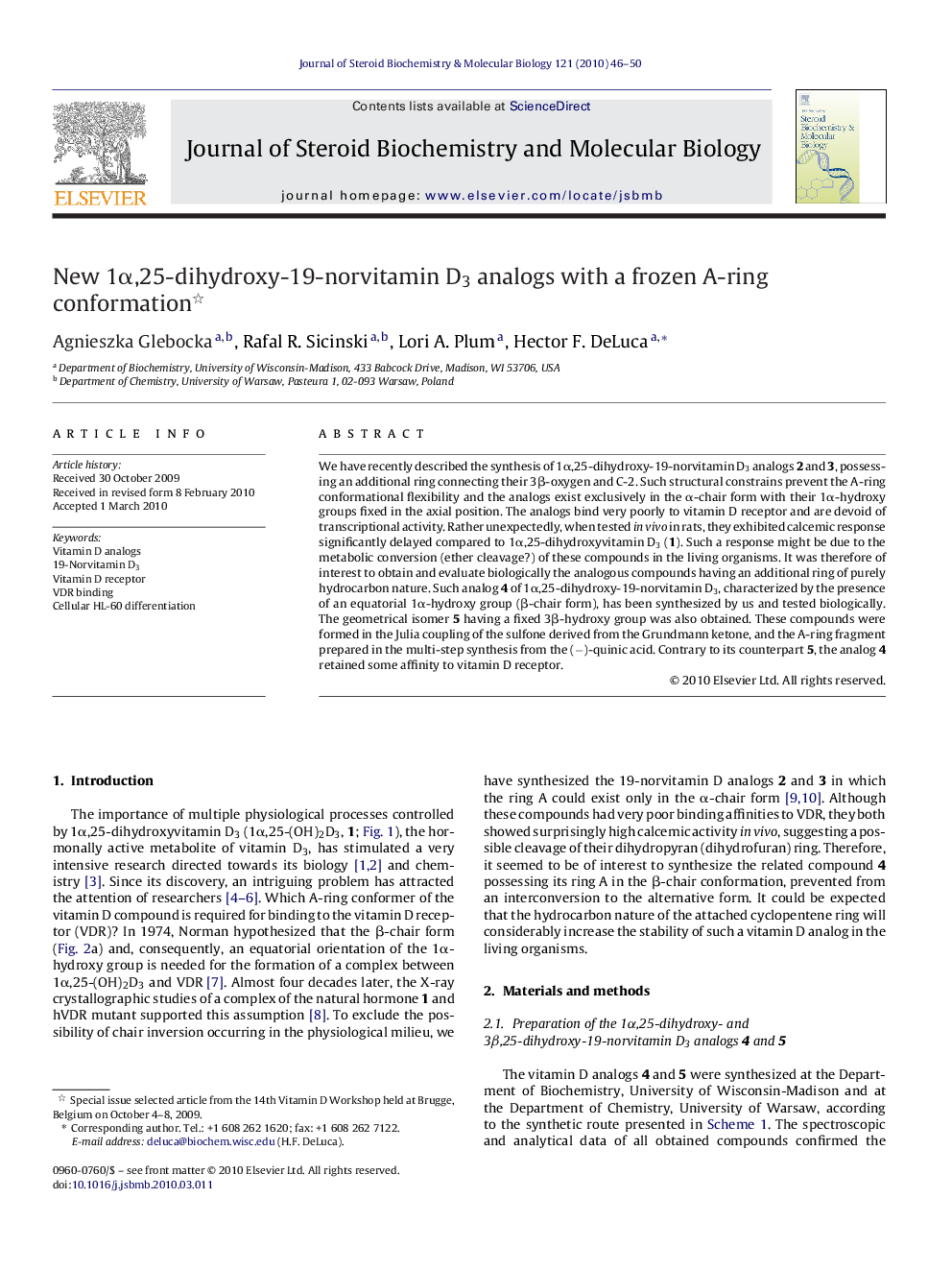| Article ID | Journal | Published Year | Pages | File Type |
|---|---|---|---|---|
| 1992398 | The Journal of Steroid Biochemistry and Molecular Biology | 2010 | 5 Pages |
Abstract
We have recently described the synthesis of 1α,25-dihydroxy-19-norvitamin D3 analogs 2 and 3, possessing an additional ring connecting their 3β-oxygen and C-2. Such structural constrains prevent the A-ring conformational flexibility and the analogs exist exclusively in the α-chair form with their 1α-hydroxy groups fixed in the axial position. The analogs bind very poorly to vitamin D receptor and are devoid of transcriptional activity. Rather unexpectedly, when tested in vivo in rats, they exhibited calcemic response significantly delayed compared to 1α,25-dihydroxyvitamin D3 (1). Such a response might be due to the metabolic conversion (ether cleavage?) of these compounds in the living organisms. It was therefore of interest to obtain and evaluate biologically the analogous compounds having an additional ring of purely hydrocarbon nature. Such analog 4 of 1α,25-dihydroxy-19-norvitamin D3, characterized by the presence of an equatorial 1α-hydroxy group (β-chair form), has been synthesized by us and tested biologically. The geometrical isomer 5 having a fixed 3β-hydroxy group was also obtained. These compounds were formed in the Julia coupling of the sulfone derived from the Grundmann ketone, and the A-ring fragment prepared in the multi-step synthesis from the (â)-quinic acid. Contrary to its counterpart 5, the analog 4 retained some affinity to vitamin D receptor.
Related Topics
Life Sciences
Biochemistry, Genetics and Molecular Biology
Biochemistry
Authors
Agnieszka Glebocka, Rafal R. Sicinski, Lori A. Plum, Hector F. DeLuca,
